Cold in July
 for disturbing bloody violence, language and some sexuality/nudity.
for disturbing bloody violence, language and some sexuality/nudity.
Reviewed by: Jim O'Neill
CONTRIBUTOR
| Moral Rating: | Offensive |
| Moviemaking Quality: |
|
| Primary Audience: | Adults |
| Genre: | Crime Thriller Adaptation |
| Length: | 1 hr. 49 min. |
| Year of Release: | 2014 |
| USA Release: |
January 18, 2014 (festival) May 23, 2014 (limited) |
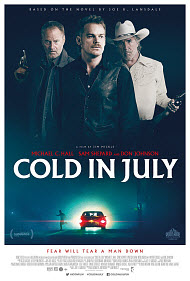

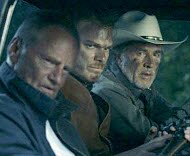
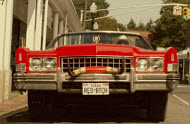
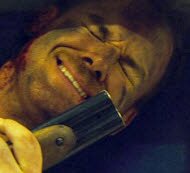
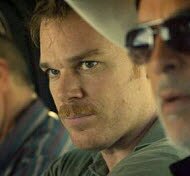
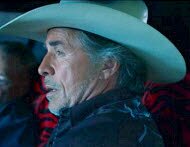

snuff films
murder in the Bible
death in the Bible
corrupt police
sin and the fall of man
FILM VIOLENCE—How does viewing violence in movies affect families? Answer
| Featuring |
|---|
|
Michael C. Hall … Richard Dane Wyatt Russell … Freddy Don Johnson … Jim Bob Vinessa Shaw … Ann Dane Sam Shepard … Russel Nick Damici … Ray Price Lanny Flaherty … Jack Crow Brianda Agramonte … Young Latina girl on tape Tim Lajcik … Mex See all » |
| Director |
|
Jim Mickle |
| Producer |
|
BSM Studio Backup Media See all » |
| Distributor |
| IFC Films |

“Cold in July” is an odd movie. Not quirky, not playful, not even all that disturbing. It’s just odd. Sometimes sun drenched, sometimes shadowy, it is never quite clear-eyed enough to have the kind of impact, or tingle, that a noir thriller needs. Director Jim Mickle’s film is based on Joe Lansdale’s pulp novel that takes place in Texas in 1989. I recommend the movie only because it showcases a masterful performance by Michael C. Hall as the conflicted hero. I do not watch a lot of television so I have not seen Hall’s work in “Dexter” or “Six Feet Under.” About the same time I saw “Cold in July,” I saw Hall in a play in New York called “The Realistic Joneses.” He is a marvel to watch, revealing a character’s hidden traits cautiously and gradually, almost by stealth. He holds you at bay until the moment he wants you to feel what his character feels. In the process you forget the actor, and you find the character. Not many actors can do that. Hall does it both on stage and on screen.
In “Cold in July,” he is part wallflower, part laser; you’re never sure at any given moment which side he will show you. He holds your attention throughout this fanciful playpen of a movie. Hall saves “Cold in July” from going over the top and over the edge.
Richard Dane (Hall) wakes up in the middle of the night to find a burglar in his house. He nervously loads his gun, confronts the intruder, and kills him. Richard’s act of violence disturbs his conscience, but his actions are excused, even lauded, by his neighbors and by the local police chief: “he’s a wanted fellow; you’re an upstanding citizen; you win.”
Richard, still guilt ridden, attends the burglar’s burial where he meets the man’s father, Russell (Sam Shepard), who has recently been paroled from prison. Wearing dark sunglasses, Russell peers through Richard’s car window—looking as threatening as the patrolman who confronts Janet Leigh in “Psycho”—and makes a not so veiled threat about killing Richard’s own young son. Richard goes to the police to ask for protection, and surprisingly enough, the film actually hits a stride at that moment unlike most noir films that tend to stop dead once the principles go to the police.
While in the station, Richard realizes that he may not have shot the man he thinks he shot, and, big surprise, the police may be hiding something.
I will not go into the details of the plot, but I can assure you that there are enough twists and turns to keep you honed into what just happened and what will happen next. There are more than a few nail biting and hair-raising moments to make the movie intermittently watchable and even enjoyable. However, those moments do not grip you or get under your skin the way real human conflicts or falls from grace can.
The filmmakers are wise not to focus too much on background corruption. This is not a small town “L.A. Confidential,” although it does involve a witness protection program, a shadowy Dixie mafia and a corrupt police force.
Some of the goings-on are hard to watch: Richard and his wife scrubbing blood splatter off walls and upholstery, the exhuming of a mutilated corpse, and the workings of a sinister and incomprehensively evil snuff film industry. The filmmakers try to temper the story’s morose elements with some humor, mostly condescending, directed at 1980s culture and at Texans.
Don Johnson appears as a flamboyant private detective who steps in to help Richard and Russell look for what the police are covering up. Johnson is more caricature than character. He looks like an extra that stepped off the set of “The Best Little Whorehouse in Texas.” He does not act or even dress the way a Texan, even a 1980s version, would. He looks more like someone going to a Halloween party dressed up like a Texan. He drives a big red convertible with red and black zebra upholstery and black and white dangling dice. Big ones. Wouldn’t a private detective want to blend in rather than stand out? And wouldn’t a couple of vile crooks that have a trunk full of contraband sex tapes notice the carnival-on-wheels that was following them?
There are a lot of implausibles—and a few downright howlers—in the film. Implausibles are okay once in awhile. They happen enough in real life. But in “Cold in July” they come one after another, and they make for more laughs than the constant retro jokes (VHS tapes and temperamental VHS players, bulky first generation cell phones, and those awful car dice). All the junk shop décor does not add to the ambiance of the story; it mostly just blocks the view.
I never got the sense that the movie’s setting was at all Texan. And it wasn’t just the vague anti-gun sentiments. After the movie ended, I stayed to watch the credits, something I often do not do, just because it annoys my film going companions, but because it gives me a lot of good information about the filmmaking business. I’m glad I did for this film. I wanted to see what part of Texas “Cold in July” was filmed in. I was amused to see that we were not in Texas after all. The film was shot in New York State and, in of all places, Woodstock, NY. That’s about as far away from Texas as you can get. I suppose it was New York’s tax credits that drew the crew eastward, but better tax credits do not a believable setting or a good movie make.
Aside from casting Hall, most of the decisions made by the director and crew of “Cold in July” were as bad as any film noir antihero (think John Neal in “Detour” or John Garfield in “The Postman Always Rings Twice”) ever fatefully made. It is never a good idea to sport with evil. If a filmmaker does, he should choose his weapons more wisely, and make sure his foundation is not built on sand. Stylized mockery and cynicism are no match for the evil one’s velvet-gloved claw.
Violence: Heavy / Profanity: Heavy / Sex/Nudity: Moderate
See list of Relevant Issues—questions-and-answers.


PLEASE share your observations and insights to be posted here.